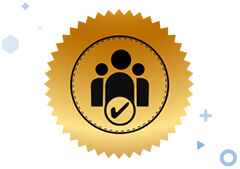Posted Jul 24, 2024 178 views
Regulatory Compliance:
Ensure all medical devices and equipment comply with all regulations.
Stay updated with changes in medical device regulations and standards, implementing necessary adjustments in practices.
Inspection and Audit Activities:
Conduct regular and systematic inspections of medical equipment to verify functionality, safety, and compliance with manufacturer specifications.
Perform audits of maintenance records, usage logs, and calibration reports.
Ensure proper documentation and labelling of all equipment.
Preventive Maintenance and Repairs:
Schedule and perform preventive maintenance on medical equipment as per manufacturer guidelines.
Diagnose and repair equipment malfunctions promptly to minimize downtime.
Maintain accurate records of maintenance and repair activities.
Documentation and Record Keeping:
Maintain comprehensive and up-to-date records of all inspections, audits, maintenance, and repair activities.
Document findings and prepare detailed reports on compliance status, identifying areas for improvement.
Quality Assurance and Safety:
Implement and monitor systems for reporting and analyzing equipment-related incidents and malfunctions.
Conduct regular risk assessments and develop strategies to mitigate identified risks.
Promote practices that ensure patient safety and the reliability of medical equipment.
Policy and Procedure Management:
Develop, review, and update Standard Operating Procedures (SOPs) related to the inspection, maintenance, and use of medical equipment.
Ensure all technical staff are familiar with and adhere to established SOPs.
Develop and implement emergency protocols for handling equipment failures and urgent repairs.
Interdisciplinary Collaboration:
Work closely with healthcare professionals to ensure the proper functioning and availability of medical equipment.
Document all significant communications, particularly those involving critical equipment and repairs.
Job Details
Askari Auditors
.
















